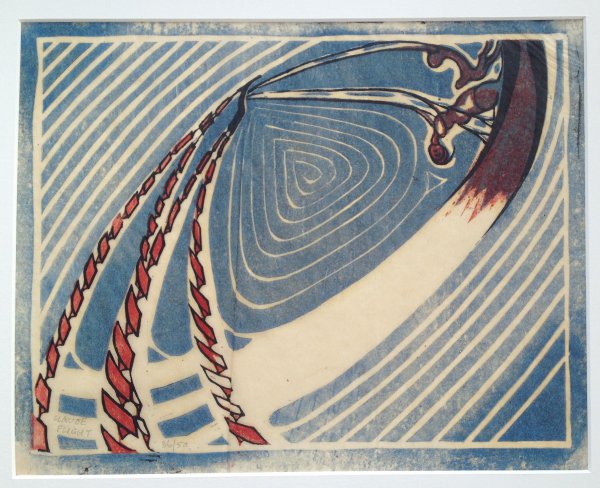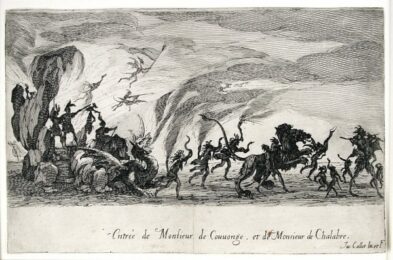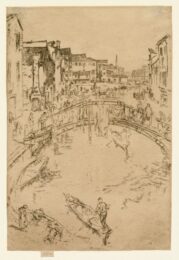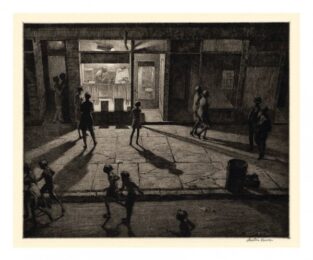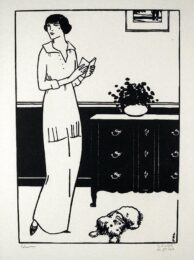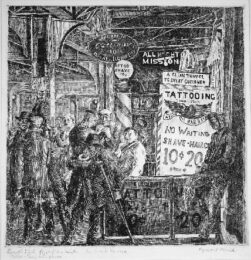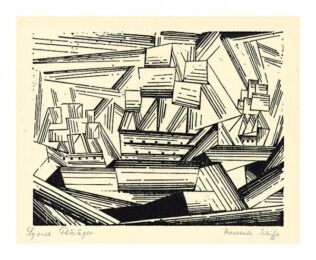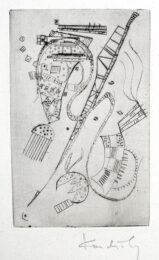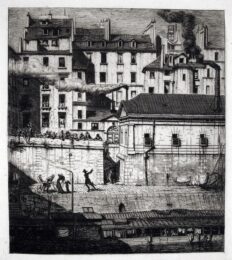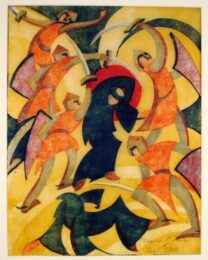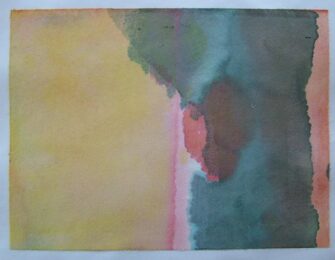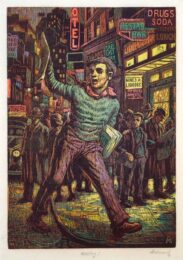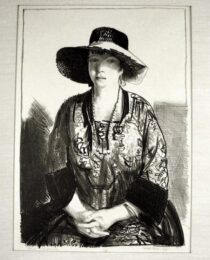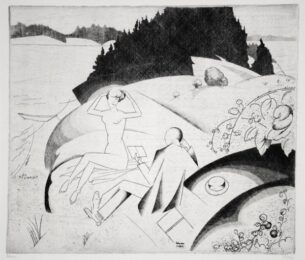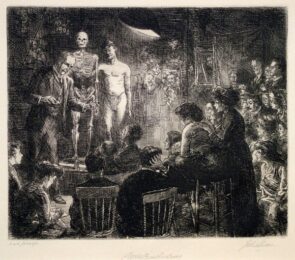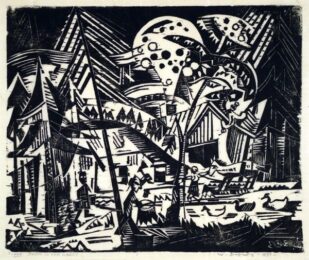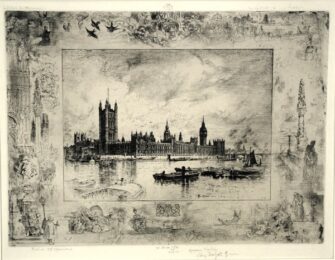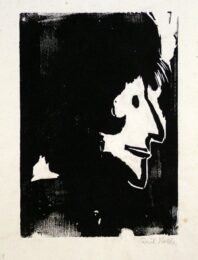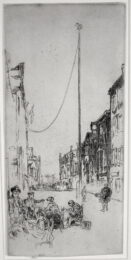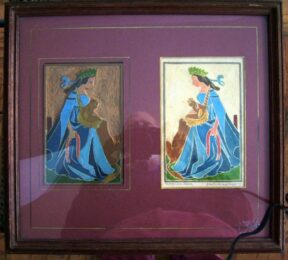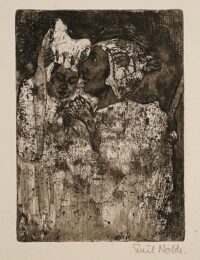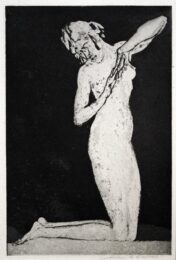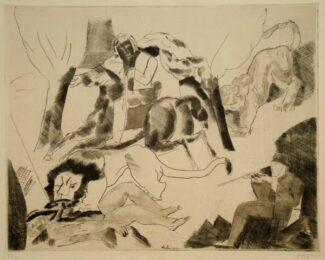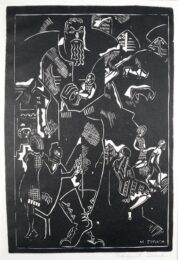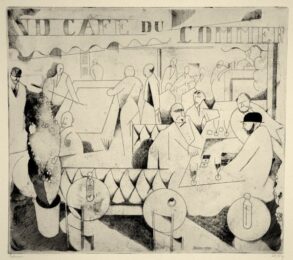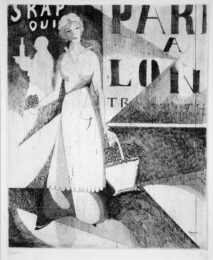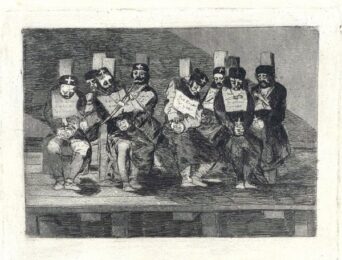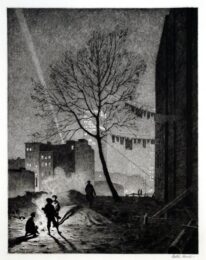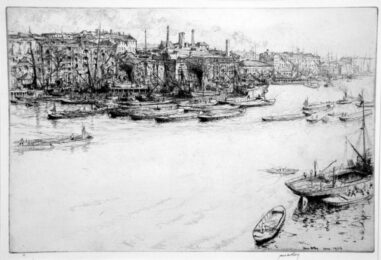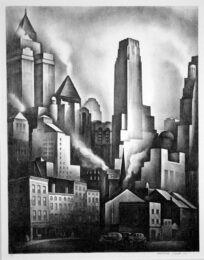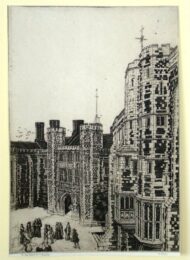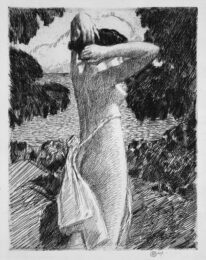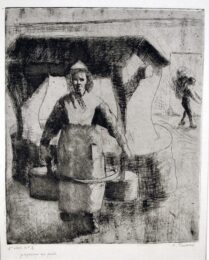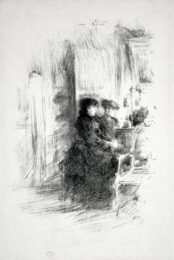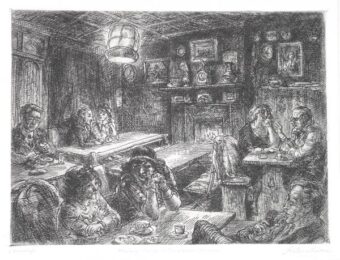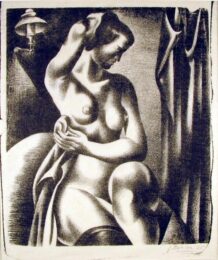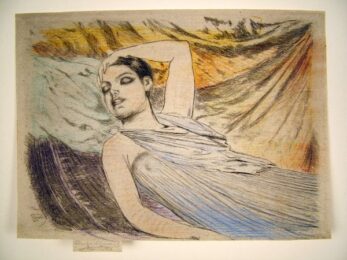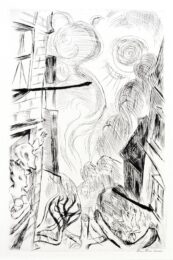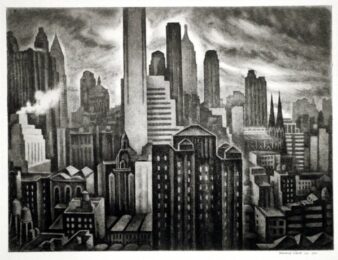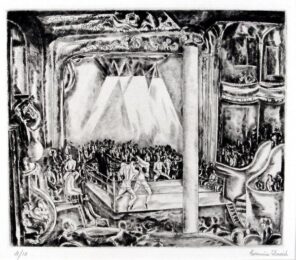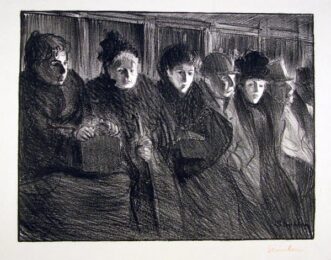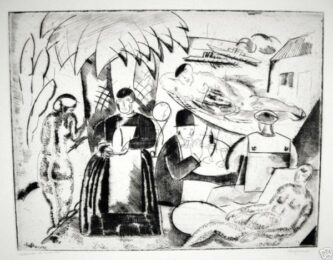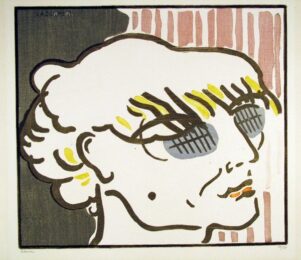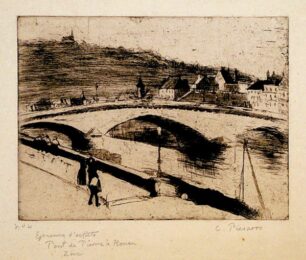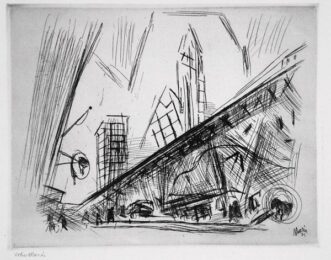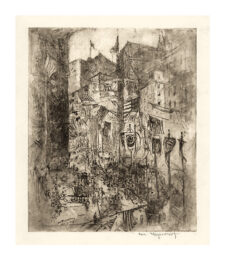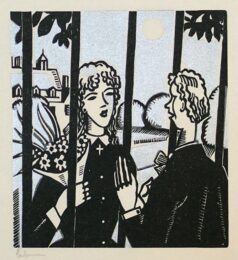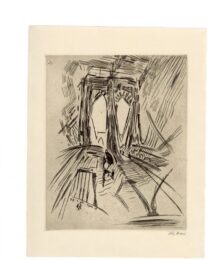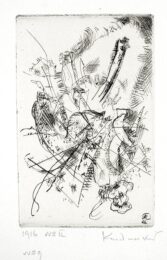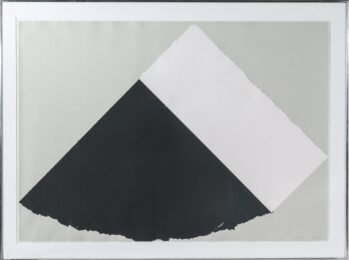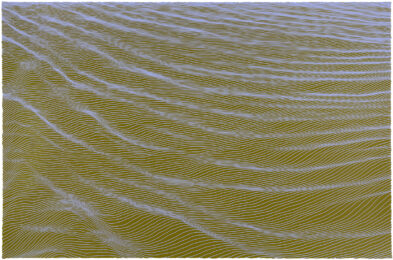Details — Click to read
Claude Flight (1881-1955), Swing Boats, circa 1919-1921, color linoleum cut on very thin Japan paper, signed and numbered by the artist lower left. In very good condition, with the full colored margin outside of the borderline (with slight imperfections typical of these British futurist linoleum proofs, i.e., border edge somewhat rough-cut, small loss upper left corner, a printing fold toward the middle of the image, slight wrinkling upper right). The sheet 10 x 12 3/4 inches.
Provenance: The Redfern Gallery, 27 Old Bond Street, London (with their label affixed to the mat).
A fine impression, with the colors fresh and balanced. Printed in cobalt blue and crimson oil paint and black printing ink.
Although the stated edition of this print is 50, according to the numbering of the artist, the print appears only infrequently on the market, and in widely varying condition and appearance – some impressions are very dark, some too light, some rather lacking in balance. We feel the present impression represents an excellent example of the print in virtually all respects.
Flight was a leader of the British Futurist movement, and a teacher at the Grosvenor School of Modern Art (his pupils included Lill Tschudi, Cyril Power, and Sybil Andrews). Flight regularly exhibited at The Redfern Gallery, as well as abroad.
A swing boat, colloquially known as a “shuggy boat” in the north east of England, is a fairground ride in which pairs of riders pull ropes to swing back and forth. Swing boats were one of the earliest fairground rides, common in the Victorian era. The boats were originally powered by hand, but steam-driven versions began to be introduced in the 1880s. Examples of Victorian-style manually-operated swing boats are still popular and are generally seen in traveling “period” fairs.

